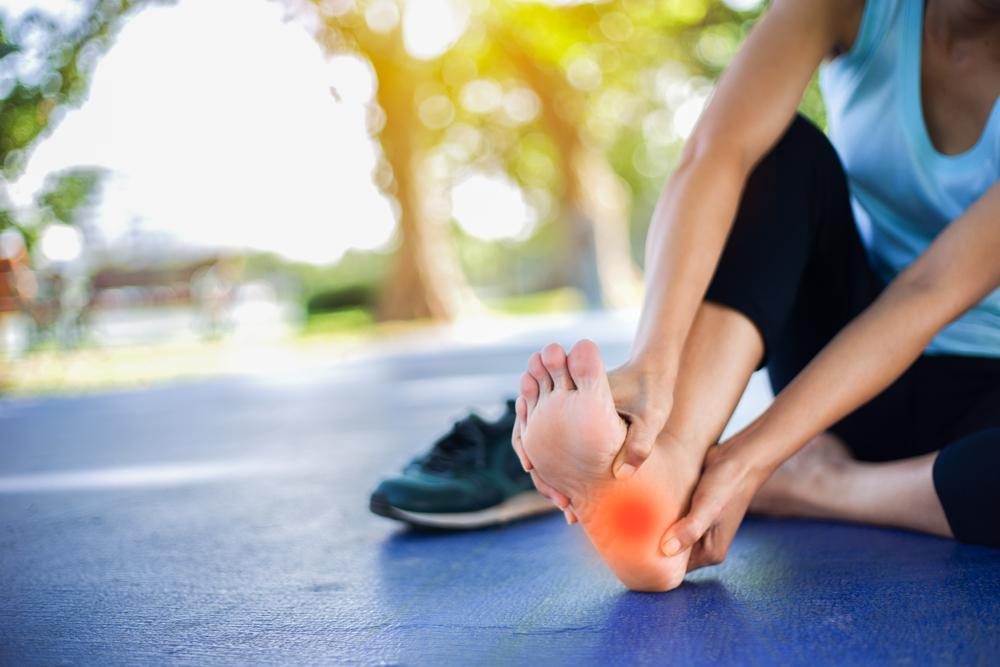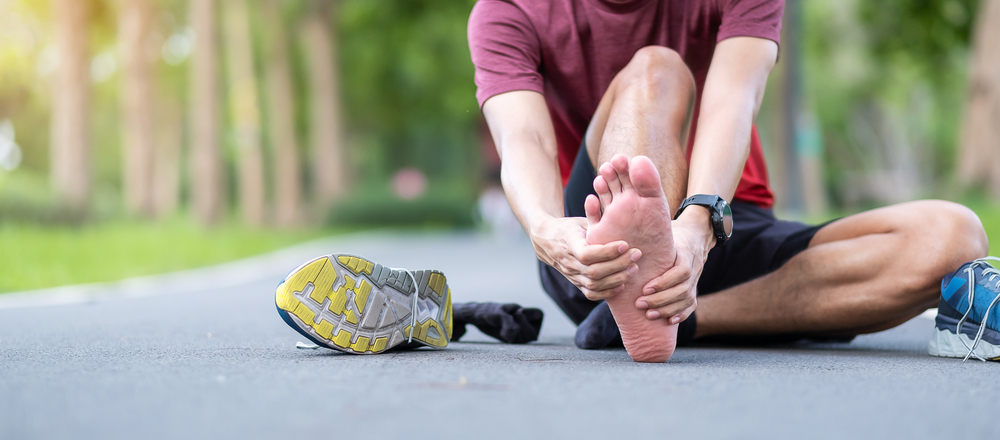Are you tired of dealing with foot pain after your runs? You’re not alone. Foot injuries are a common issue for runners, with studies showing that anywhere from 5.7% to 39.3% of runners experience foot injuries. But the good news is, many of these injuries can be prevented with the right strategies.
Let’s dive into the most common foot injuries from running, and more importantly, how you can protect your feet and keep running strong.

What are the most common foot injuries from running?
Plantar fasciitis
Plantar fasciitis, also known as plantar fasciopathy, is one of the most common causes of heel pain, resulting from inflammation of the plantar fascia, a thick band of tissue running across the bottom of your foot. If you have this injury, you may be experiencing sharp pain in the heel, especially in the morning or after long periods of standing.
Neuroma
A neuroma, often referred to as Morton’s neuroma, is a thickening of the tissue around one of the nerves leading to your toes. You may feel a burning pain in the ball of your foot, tingling, or numbness in your toes.
Achilles tendinopathy
This occurs when there are structural changes in the Achilles tendon, which connects the calf muscles to the heel bone. Most of the time it will present as pain and stiffness along the Achilles tendon, especially in the morning or after exercise.
Blisters
Blisters are small pockets of fluid that form on the skin due to friction. If you have blisters, you may find them to be painful, fluid-filled bubbles on the skin, often on the toes or heels.
Black toenails
Black toenails happen when there is bruising under the toenails caused by repetitive trauma. These appear usually as discolouration of the toenails, pain, and sometimes nail loss.

Prevention strategies for foot injuries from running
1. Proper warm-ups
Warming up before a run is crucial to prepare your muscles and joints for the activity ahead. A good warm-up increases blood flow, enhances flexibility, and reduces the risk of injury.
Here are some effective warm-up exercises:
- Dynamic stretches: Include leg swings, arm circles, and walking lunges.
- Light aerobic activity: Start with a brisk walk or a slow jog for 5-10 minutes.
2. Form corrections
Maintaining proper running form can significantly reduce the risk of injuries.
Here are some tips to improve your running form:
- Keep your shoulders relaxed: Avoid hunching your shoulders; keep them back and relaxed.
- Land under your center of mass: Aim to land your feet directly under your body to reduce impact.
- Maintain a slight forward lean: Lean slightly forward from your ankles, not your waist.
3. Physiotherapy
Physiotherapy can play a vital role in both preventing and treating foot injuries from running.
Here’s how physiotherapy can help:
- Gait analysis: A physiotherapist can analyse your running gait to identify and correct biomechanical imbalances.
- Strengthening exercises: Tailored exercises can strengthen weak muscles and improve flexibility.
- Injury management: Getting an effective treatment sports injury rehabilitation plan to address existing injuries helps ensure a safe return to running.
4. Footwear and orthotics
Wearing the right shoes is essential for preventing foot injuries.
Here are some tips:
- Choose the right shoes: Select shoes that provide adequate support and cushioning for your foot type.
- Replace worn-out shoes: Running shoes should be replaced every 400-800 kilometers.
- Consider custom orthotics: If you have specific foot issues, a podiatrist can prescribe custom orthotics to provide additional support.
For more information on how to choose the right running shoe, check out our blog.
5. Gradual training progression
Avoid increasing your running mileage or intensity too quickly. Follow the 10% rule: increase your weekly mileage by no more than 10% to prevent overuse injuries.
6. Listen to your body
Pay attention to any pain or discomfort and take rest days when needed. Ignoring pain can lead to more severe injuries.

Dealing with a foot injury from running? We can provide support
Foot injuries from running are a common challenge, but with the right prevention strategies, you can keep your feet healthy and enjoy pain-free runs. Remember to warm up properly, maintain good running form, and seek physiotherapy if needed. By taking these steps, you can avoid common foot injuries and stay on track with your running goals.
If you’re experiencing persistent foot pain or need personalised advice, our multi-disciplinary team of healthcare professionals at Lifecare are here to help. Find your closest clinic today to schedule an appointment and take the first step towards injury-free running.
Written by Jatin Jivanji, Podiatrist – Lifecare Malvern Sports Medicine
Jatin is a podiatrist with qualifications in Podiatry and Sport and Exercise Science which he uses to help his patients understand their injuries and provide a clear pathway to regaining their pain-free lifestyle. He is available for consultation at Lifecare Malvern Sports Medicine and provides podiatry care to Melbourne’s inner eastern suburbs including Armadale, Prahran, Caulfield and Toorak.

